The BMW i4 Strikes A Dangerous Balance
Should your EV shout about its electrons, or will more drivers come calling if aesthetic takes a back seat to technology? That's the challenge automakers like BMW face, and the confirmation of the 2022 i4 and iX launch details this week has thrown a spotlight on some of the biggest difficulties that linger beyond electric range alone.
Advanced mass-production manufacturing techniques have made this one of the most interesting times for car design. Creases can be sharper, curves more sumptuous, and bigger, more capable presses can produce ever-larger moldings to pare back cutlines and open the door to new shapes. You may not like the end result each time, but it's definitely eye-catching.
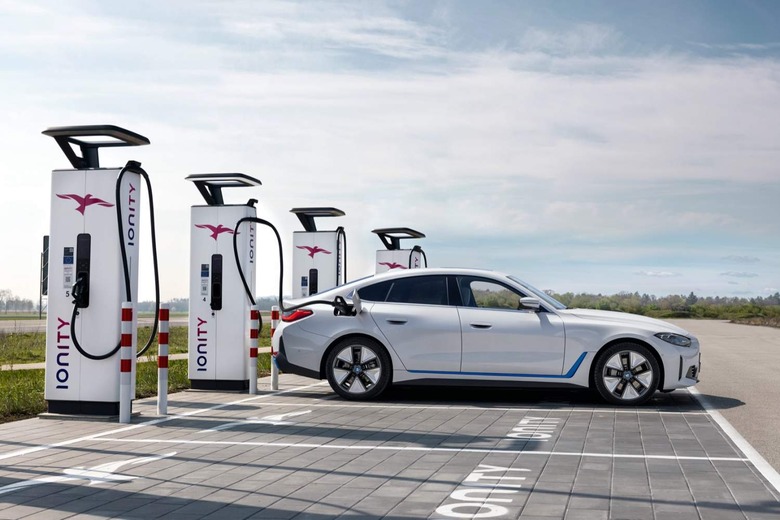
It also raises new issues for this latest generation of electric vehicles, and we've seen different approaches from different automakers as they try to bring EVs into the mainstream. Whether you go sensible or space-age, either way you risk alienating potential customers.
BMW's aesthetic strategy there has been starker than most. On the one hand, you've had the hybrid versions of its traditional range, models like the 2021 330e. You'd be forgiven for missing that they were plug-in hybrids, so clandestine is their electrification. Some surreptitious badging and the extra charging port door are basically the most obvious giveaways, easily missed if you're not looking for them.
At the other extreme, though, have been the BMW i-Series cars. Nobody ever described the i3 or i8 as being shy, subtle, or indeed anything other than attention-grabbing: bold and unapologetic in their EV nature.
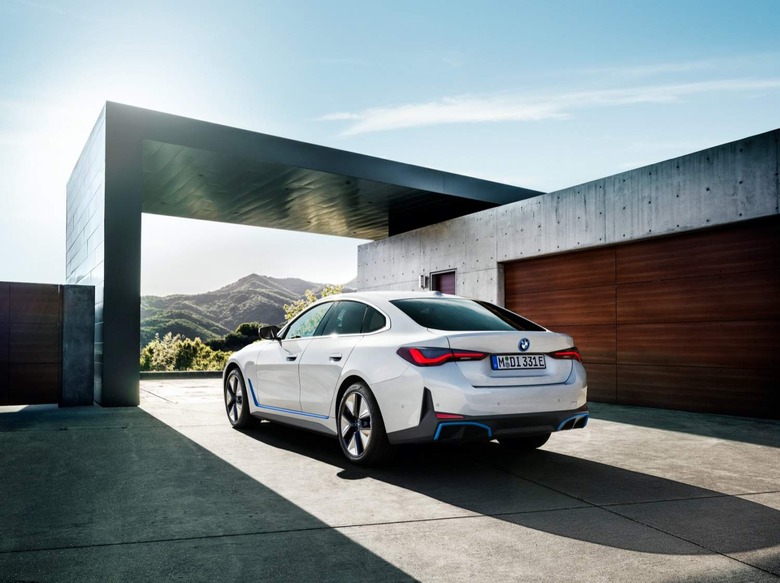
It's been an unusual strategy, counting on the idea that "true electric converts" will also probably want to wear that status on their sleeve. That leaves everyone else – those who maybe just want a PHEV for the economy benefits, perhaps, or to take advantage of the tax incentives – who presumably prefer it to fly under the radar instead. If you don't look closely, your plug-in 3 Series looks like, well, every other 3 Series in the grocery store parking lot.
The BMW i4 upends that strategy, though. Or, depending on where you're standing, it borrows from both sides, and tries to establish a new middle-ground.
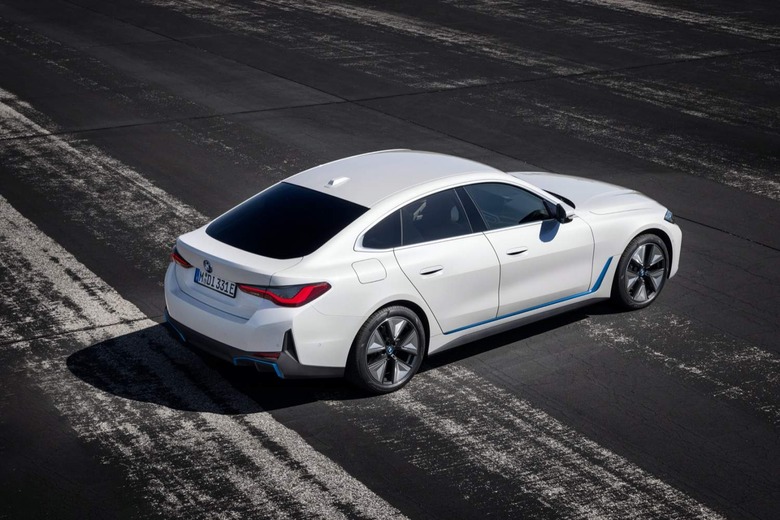
So, it has a silhouette like a traditional BMW sedan, albeit the sort of sleek, stylized version we've grown to expect from the automaker's even-numbered series. It has a big grille and squinting LED headlamps, sure, but then so do a lot of BMW's gas cars at this point. The i4 may blank it out because its cooling needs are different, but the vast nostrils are still there – for better or worse.
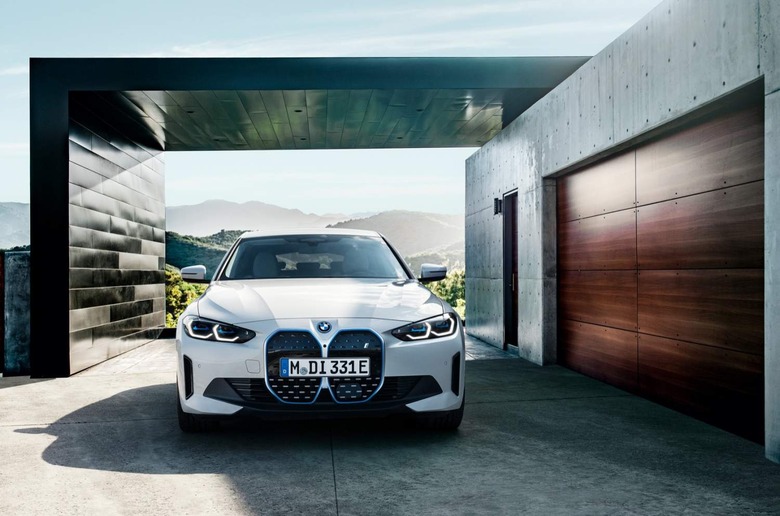
All the same, there are more giveaways than the existing BMW PHEVs. Extended blue exterior trim and more aerodynamically-minded wheel designs are the obvious ones, though you can spot more EV cues the more you look at the sedan. It's definitely more obvious as an electrified car than, say, a 330e is.
I can understand why BMW has shifted its approach. It can't afford to treat electric vehicles as outliers any more: they're no longer the unusual side-projects that you work on because they're interesting from an engineering point of view, or might gain you a little credit among fringe environmentalist drivers. With the auto industry hurtling into full-scale electrification, BMW EVs can't be oddballs any more. They have to be, well, normal.
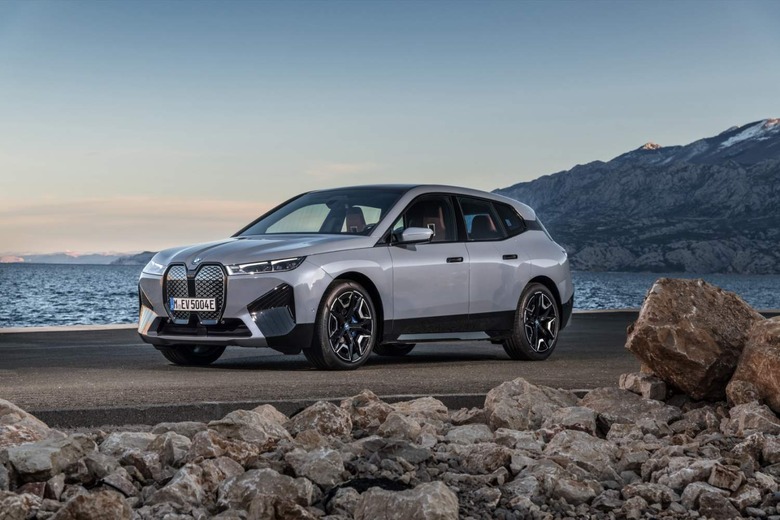
The question, then, is how well will that strategy go down with the BMW faithful: the cohort, indeed, that the automaker needs to win over and convince that an electric car can also be the Ultimate Driving Machine. It's a group that hasn't exactly been shy about voicing opinions about those sizable grilles, for example, and which has been fairly conservative in general. The surreptitious styling evolution of the 3, 5, and 7 Series over the years is a reflection of that preference toward gradual transition.
I suspect the i4 will have an easier time of it than, say, the 2022 iX SUV. Also headed to dealerships early in 2022, it pushes the aesthetic envelope even further – though not, it's notable, in chasing "traditional" EV cues.
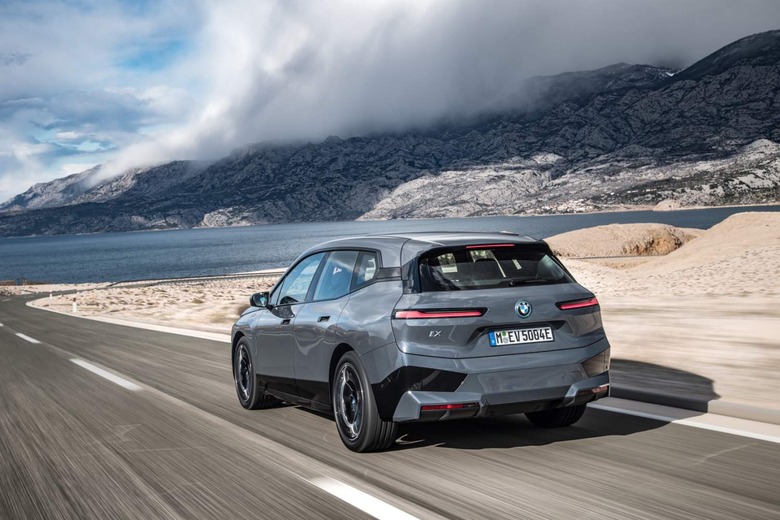
Instead it's hard not to see a willful desire for sheer difference in the iX's challenging proportions and detailing. The elevated lights, slabbish fascia, and steep shoulders are like little else on the road right now, and that's before you get to arguably the most contentious part, the rear. BMW's trunk design looks a lot like a sneering Decepticon, and while the blue ring around the company logo may say "electric," the rest of the SUV threatens to stand out but in a very different way.
At a time when the lure of aerodynamic slipperiness – and its impact on range and efficiency – is difficult to resist as automakers chase more returns from their expensive battery packs, perhaps BMW deserves some kudos for not making the iX and i4 amorphous blobs. All the same, car styling is only going to become more divisive as EVs push out of their niche and into the mass market. Viewed together, the i4 and iX suggest automakers may struggle to get that approach pitch-perfect, even between side by side models in their electric line-ups.
